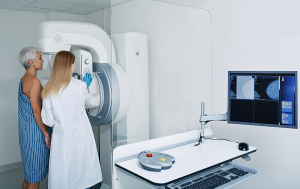by
John R. Fischer, Senior Reporter | August 22, 2023

Preventive cancer screenings have saved the U.S. economy at least $6.5 trillion.
In the last 25 years, preventive screenings for breast, colon, cervical, and prostate cancer have yielded at least $6.5 trillion in savings for the U.S. economy but could save another $1.7 to $2.7 trillion if every eligible individual was screened.
According to researchers from the Universities of Chicago and Michigan and cancer detection company Grail, 12.2 to 16.2 million more life-years were gained by Americans screened between 1996 and 2020, and 3.2 to 5.1 million more life-years could be included if all of the estimated 417 million who qualified were tested. This equates to savings of $6.5 to $8.6 trillion with current adherence. Perfect adherence would include savings of $8.2 to $11.3 trillion.
The estimated savings does not include money saved for treating cancer at an earlier stage instead of a late one, wrote the authors in their study,
The aggregate value of cancer screenings in the United States: full potential value and value considering adherence. They say it is the first to estimate the population-level, longitudinal, aggregate survival benefits of cancer screenings.



Ad Statistics
Times Displayed: 174428
Times Visited: 3180 For those who need to move fast and expand clinical capabilities -- and would love new equipment -- the uCT 550 Advance offers a new fully configured 80-slice CT in up to 2 weeks with routine maintenance and parts and Software Upgrades for Life™ included.
“A substantial number of Americans who could benefit from early detection of these four cancers use are not screened, even though the screening tests must be provided without any out-of-pocket costs for almost everyone with health insurance,” Dr. A. Mark Fendrick, senior author of the study and a professor of internal medicine and public health at U-M, told HCB News.
Since 2010, the Affordable Care Act has made most of these services free of charge for patients, with recommendations by the United States Preventive Services Task Force (USPSTF) expanding age groups and the number of patients who qualify for them.
But a new legal challenge,
Braidwood vs Becerra, may
negate these changes made since the ACA passage and require millions to pay out-of-pocket.
For their analysis, the researchers accounted for USPSTF recommendations for these screenings, including when women should start getting annual mammograms; when all adults should get colonoscopies or other tests for colorectal cancer; and the introduction of CT screenings for lung cancer in certain current or past smokers.
The majority of cancer-related deaths (70%) were attributed to diseases without validated tests, while death rates for those with screening fell and contributed to the overall drop in U.S. cancer death rates.
More than 58% of life-years saved and the most economic savings came from cervical cancer screenings, though this may change due to the HPV vaccine. The researchers also found that 79 million men are eligible for prostate cancer screenings, which have so far saved 2.4 million life-years.
Validating more tests for cancer screening requires more research. New types of screening tools are currently in development, including AI-based technologies, but have yet to be reviewed by USPSTF or other bodies.
The findings were published in
BMC Health Services Research.

